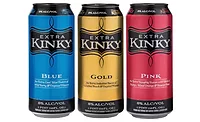New products, package sizes complicate category management
Retailers use cross-promotions to accommodate unique product options
Manufacturers and retailers continually are searching for ways to optimize shopper satisfaction through category management. But while the overall idea remains the same, the ways manufacturers and retailers go about this process changes as trends evolve.
One trend is that consumers are becoming more partisan in their shopping behavior and less willing to sacrifice either quality or price, depending on which matters more to the consumer, according to Howard Telford, senior beverages analyst at Euromonitor International, Chicago.
“The middle is eroding, and people care mostly about quality or price,” Telford says. “This is exemplified by the retailers we see growing in the United States. … Discounters grew 4.6 times faster than hypermarkets between 2009 and 2014, whilst supermarkets actually saw their sales decline by 2.3 percent in constant terms. At the other end of the market, Whole Foods [Market] has grown to be the fifth-largest supermarket in the United States since 2009 and remains the place to be for many healthier, premium soft drink and hot drinks brands nationwide.”
Retailers have had to adjust to this partisan behavior among consumers.
“Retailers are either looking for high-demand, premium products from which they can maintain a high margin or products with as low a cost as possible so they can establish themselves as low-cost outlets and thus maintain volume,” Telford says. “Each is very focused on their customer base. On the higher end of the spectrum, it is typically newer, smaller-format shops that you see popping up and that are focusing on authenticity and value-added propositions to increase their customer base. Consumers seeking value-added healthier, natural, functional beverages are drawn to this channel, and we have seen premium grocery retailers emerge as the hotbed of innovation in super-premium beverages.”
Along with super-premium beverages, other emerging categories such as liquid concentrates, single-serve coffee pods, smoothies, and refrigerated teas and coffees are impacting retailers’ category management and merchandising protocols.
“In the world of soft drinks, retailers are impacted by several changes: a consumer demand for different, new beverages and a re-alignment of categories away from traditional high-volume categories like carbonated soft drinks,” Telford says. “The average cooler in a convenience store or supermarket aisle has exploded with new products, flavors and categories, [including] functional waters, energy drinks, iced teas, liquid concentrates [and] single-serve pods, over a short period of time. Categories are blurring, and new emerging categories like coconut water or cold-brew coffee also enter the battle for a limited amount of shelf space. It’s more difficult than ever for category managers to keep their finger on the pulse.”
But predicting consumer wants isn’t the only issue retailers are facing. They’re also being challenged by new packaging options.
“The retailer is also faced with traditional carbonated soft drink brands seeking to use the package to increase their margins and differentiate the brand in a slow-growth environment,” Telford says. “The days of the lone 20-ounce bottle of cola in a convenience store cooler are over. Today, retailers are faced with mini-cans, glass bottles, aluminum bottles, 473-ml ‘tall-boy’ cans and a variety of other products that can confuse the retailer, potentially cannibalize sales, and may not prove successful in all demographics and areas of the country.”
Within this changing retail environment in which consumers are seeking more options, marketers and retailers have to figure out where these items fit within the store. One solution has been cross-promotions.
“The best example is, of course, PepsiCo [Inc., Purchase, N.Y.],” Telford notes. “Despite pressure from activist investors, PepsiCo’s business model has been based on the marketing, promotion and merchandising synergies of their beverages and foods as part of the so-called ‘Power of One.’ The company believes this to be a vital component of global growth and has defended the model vigorously against those calling for the lower-growth North American beverage business to be separated from [the] higher-volume snacks and foods [segment].”
Beyond this, consumer interest in specific product attributes, particularly quality and price, has created a demanding merchandising environment for products that historically have focused on their big brand names as opposed to their product attributes, Telford notes. “Being unable to compete on price or quality, [big brands] are not only occasionally losing out to more expensive or newer items, but increasingly to private-label [products], which consumers are beginning to adopt more as they are seeing smaller differences in taste these days.”
To maintain relevance in the market, some of the more established brands have turned to acquiring smaller, newer brands, Telford points out. “[Atlanta-based The Coca-Cola Co.’s] Venturing and Emerging Brands segment has been the hub of on-trend product development, and rival PepsiCo re-vamped its Naked Emerging Brands team in 2015.”
Overall, Telford expects these trends to continue to make an impact on beverage merchandising.
“Storied brands like Coke and Kraft will always have a place on the shelves thanks to their dominance and place in American culture, but they will likely have to make room for a consumer that demands more options and embraces variety and quality in ways that were not as widespread as they were before,” Telford says.
Looking for a reprint of this article?
From high-res PDFs to custom plaques, order your copy today!





